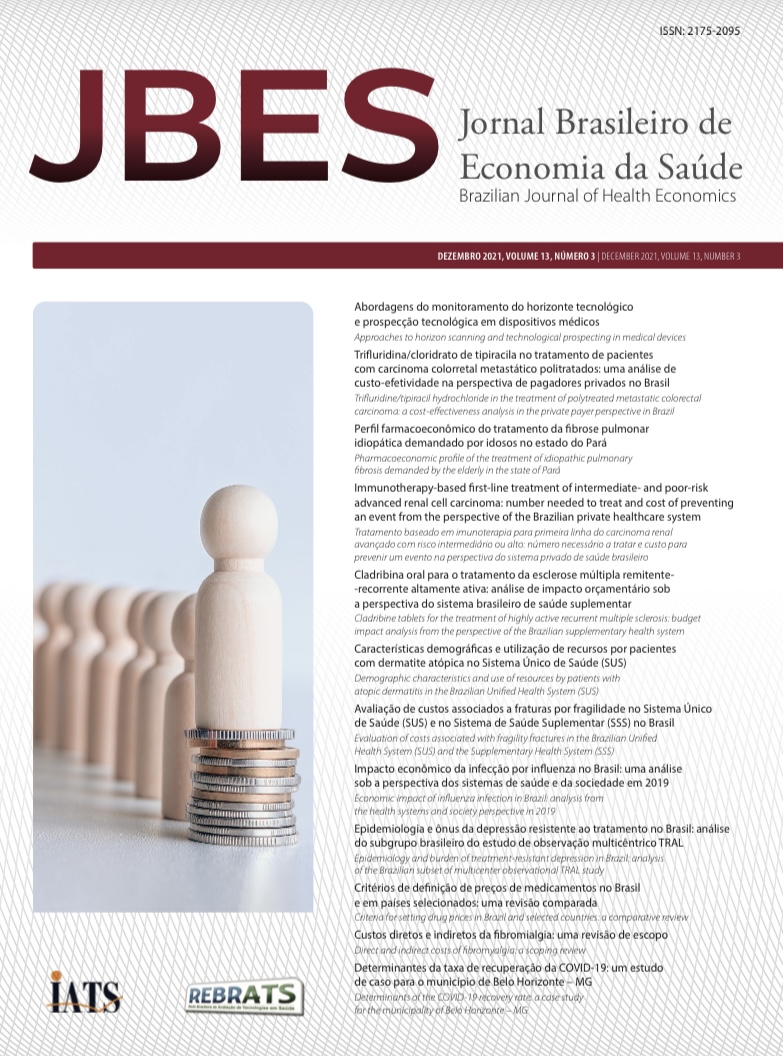Economic impact of influenza infection in Brazil: analysis from the health systems and society perspective in 2019
DOI:
https://doi.org/10.21115/JBES.v13.n3.p300-9Keywords:
influenza, global burden of disease, costs and cost analysis, BrazilAbstract
Objective: To estimate the economic impact of influenza in Brazil, considering society and healthcare payers perspectives. Methods: The expected number of influenza cases resulting from outpatient visits, hospitalizations, and deaths attributed to the disease in Brazil was calculated using an economic model, literature data, and a census database for reimbursement purposes (SIH/SUS). Costs were obtained through data extracted from Datasus and publicly available sources for public and private care, respectively, and reported in Brazilian real (BRL). Results: The occurrence of 14.9 million cases of influenza per year in Brazil was estimated, with about 97 thousand hospitalizations and 5.8 million outpatient visits. In addition, about 12 million productivity days and 78,000 years of life were lost in one year. Total disease economic impact was 5,622,438,761 BRL. Indirect cost was the most representative source of burden, about 69% (3,889,541,452 BRL) of the total. Direct and out-of-pocket medical costs represented approximately 23% (1,312,175,732 BRL) and 7% (420,721,577 BRL), respectively Conclusion: Despite the efforts related to the vaccination of several groups, influenza has an important economic impact, reinforcing the relevance of public health strategies to reduce the disease burden. This impact is especially related to the indirect costs generated by productivity and years of life lost.






